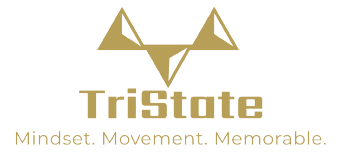Building an Athlete-Coach Relationship That Lasts
Training plans don’t build trust. Presence, care, and communication do—from both sides.
In a world full of programs, platforms, and PDFs, the athlete–coach relationship is still what matters most. You can buy a great training plan from one of the best coaches in the country for $50. But the plan itself isn’t what helps an athlete grow.
It’s the relationship behind it.
As both an athlete and a coach, I’ve learned this the hard way—and the right way. I’ve seen what strong relationships look like. I’ve also seen what happens when they drift, break, or burn out. And through all of it, I’ve come to believe that the athlete–coach connection is what determines whether training becomes transformational—or transactional.
It Starts with Care
The best coaches I’ve had in my life didn’t just ask me about my lifts. They asked about my life.
My current coach, Sean Rigsby, understands that I’m a father and a business owner. He cares about how I’m doing as a person—not just what I can total on the platform.
That’s the foundation. Not technique, not percentages, not peaking blocks. Care.
But as a coach, I’ll be honest—it’s not easy to scale that kind of care. When you’re coaching dozens of athletes, it can feel impossible to stay fully tapped in to everyone. You have to find systems, rhythms, and small moments of connection to let your athletes know: “I see you. I care. I’m here.”
When I Knew It Was More Than Just Programming
I learned how real the relationship is when I got my first weightlifting coach after transitioning out of CrossFit. He didn’t just write programs. He invited me to train with him. He checked in on how I was recovering. He showed up in ways that had nothing to do with percentages—and everything to do with presence.
That experience shaped how I coach now.
Because here’s the truth:
Any safe, well-structured program will make you stronger.
But no program can replace a real, trusting, human relationship.
How I Build Trust with Athletes at TriState
When someone new joins TriState, especially if they’ve had tough experiences with previous coaches, I know I’m not just inheriting a training log. I’m stepping into their history.
That’s why I start with phone calls, meet-day debriefs, and open conversations. I want to know:
Why do you train?
What does success feel like to you?
What do you need from me?
And then I listen. Hard.
Because athletes feel stress, doubt, and pressure—especially at meets.
If I can show up and be steady for them when they need it most, that trust gets real.
One of the strongest bonds I’ve ever formed with a coach came after I bombed out at a meet. It was my first one with Sean. I wanted to impress him—and I didn’t even hit a single clean & jerk.
But it was how he handled it afterward that built the relationship. That’s when I knew: this wasn’t conditional. This was coaching.
The Athlete Has a Role Too
This isn’t one-sided. Great coaching relationships require communication from both directions.
If I don’t hear from an athlete—if they’re not sending videos, checking in, or even just texting back—it’s hard to support them. I’ll keep showing up, but eventually, I need the athlete to meet me in the middle.
Strong athlete–coach relationships are built on shared ownership. You don’t just show up when you’re crushing PRs—you reach out when things are off, too.
When It’s Time to Let Go
Not every relationship lasts forever. And that’s okay, even when it’s hard.
I once coached an athlete who had been with me since the beginning—literally training in my garage when TriState was just getting started. Years later, a better opportunity came along for him. A different club, more support, a better path for his goals.
It was tough. But we had the conversation.
We both knew it was right.
And we both still respect each other because of how we handled it.
The truth is: relationships last longer when you let them evolve—even if that means letting them go.
Final Thoughts
Whether you’re the athlete or the coach, the relationship comes first.
It’s what gets you through missed lifts, bad meets, big moments, and long seasons.
Training plans are tools.
Coaching relationships are the foundation.
And if we build them with honesty, care, and shared communication—they’ll last far beyond the platform.

